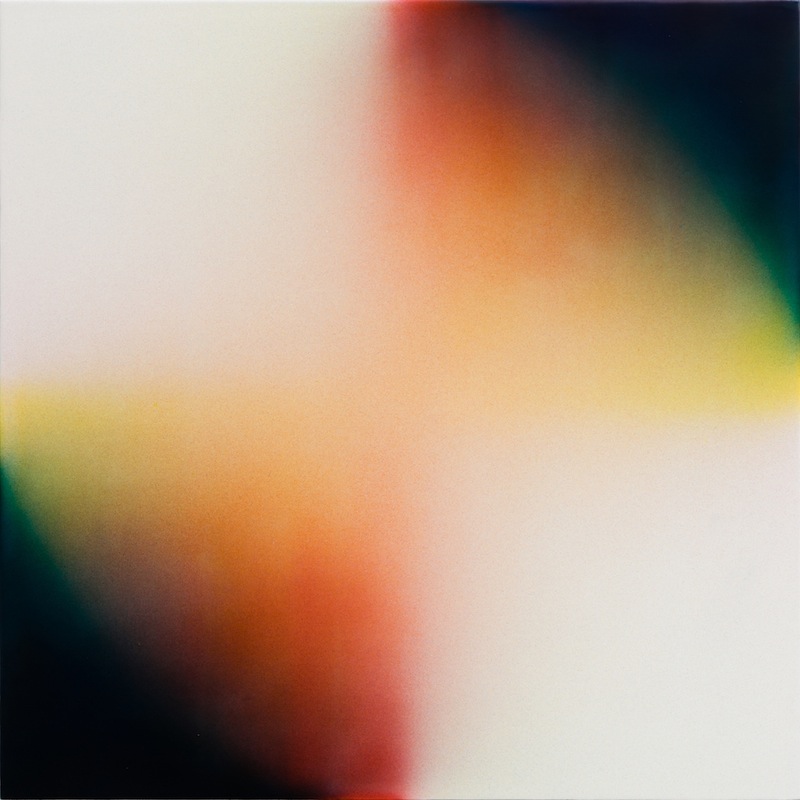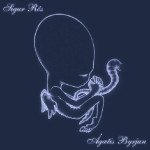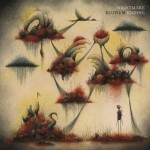Bing & Ruth : No Home of the Mind

It’s rare today to hear an ambient record composed almost entirely of acoustic textures. This is no fault of the magic that DJs and producers are able to wield, nor to the works they create; electronic instrumentation is, for better or worse, the future of music, and it will remain perennially an untapped vista of near-limitless potential, given all the ways that sound can be affected, processed, and generated in that space. Still, there is something profound, in that very base and immediate way, to the lushness of chamber music composed with texture more in mind than melody.
It would be easy to mistake Bing & Ruth‘s No Home of the Mind for being the work of a more orchestrally-inclined producer, or perhaps a very richly-constructed solo project; it is, however, a small orchestra of shifting size unto itself, however, shifting from as small as four or five players all the way up on some releases to closer to 10 or 20. The number of components is a mere factotum, granted, but one that illustrates how deftly composed and layered these pieces are; while some composers and directors for ensembles of this size struggle to highlight the identity of each constituent instrument and player, Bing & Ruth focuses on blending them bit by precious bit into a seamless and cinematic whole. The fact that you are listening, at any given time, to so many players rendered indistinguishable in the gentle layering of the timbres and lines that they play is a testament to the compositional prowess and inner ear of the composer, to the absence of ego among the players, who sacrifice themselves to create these lush slow-moving compositions.
That these are ultimately compositions places Bing & Ruth more firmly in the camp of the more academic Brian Eno ambient recordings or the more earthy and direct pieces composed by fellow minimalists such as Philip Glass and Steve Reich. It is only their tempo, their glacial pacing, that renders them by the inner ear of the listener to sit within the realms of ambient or new age music; again, no slight to those spaces, but merely to note that this is ultimately a different kind of beast. And yet these similarities must, at some level, be intentional; the thought that, in 2017, the composer behind these works would be unaware of those musical spaces is laughable. Instead, it seems a gentle reaffirmation of something that those in the art music world have known for a long time: that the bridge between lauded classical/modern creative jazz works from the label ECM and contemporary ambient/new age work from figures such as Jon Jenkins is a well-respected one, that those compositions are only seen as dull and bourgeois because of the level of attention they require to decode.
It is here that the similarities between ambient music, new age, minimalism and something as outré as death metal or experimental black metal become apparent. One end has a surface affect of placidity and slow-unfolding; the other, a hypomanic and overwhelming sonic causticity. However, beneath both lie the same entity: Profound attention must be paid to both for the dividends to pay off, to make sense of notes or passages which might seem at first glance like wallpaper or yet another in a near-endless procession of repetitive similar figures. Extreme metal slows in the mind the deeper you tunnel in, like jazz; ambient music speeds up, both approaching the same terminus.
Why this comparison? Because beneath the gentility, Bing & Ruth have buried their most deeply and immediately affecting progressions and melodies yet. This plays like, to one ear, Sigur Rós in even slower motion, or rather like the kind of music Sigur Rós sought in the first phase of their career to emulate with rock instruments. To another ear, this is soundtrack music devoid of accompanying film, gesturing to mind-images like the obsidian sheen of the waves, the dull green of the ocean reflected in the sky, the striations of basalt rendered apparent by a cleaving of stone into sea. It is a sonic divorce, slow and intimate, the touch of skin; in short, it transcends its wordlessness to touch a more immediate and evocative, if slow-moving, center, and calls to mind through this similar tempoed emotional images.
This is due in no small part to letting the ever-rich voice of a well-tuned piano lead upon a bed of electronics, strings and woodwinds. Those breathy and sonorous instruments create a rich sonic environment, like the gentle persistent rhythm of heartbeats and human breath, while the piano gestures in pointillist arpeggios and chords like a human voice, or the movement of eyes in the skull, or the diversion of attention or thought in the mind. The clear correlation of these instruments and compositional textures is a testament to the unerring humanness of these pieces and to the work as a whole; this is a serious, human, emotive, and deeply intimate album of art music that should rightfully remain talked about for the remainder of the year.
Similar Albums:
 Sigur Rós – Ágætis Byrjun
Sigur Rós – Ágætis Byrjun
 Julianna Barwick – Will
Julianna Barwick – Will
 Eluvium – Nightmare Ending
Eluvium – Nightmare Ending
Langdon Hickman is listening to progressive rock and death metal. He currently resides in Virginia with his partner and their two pets.

